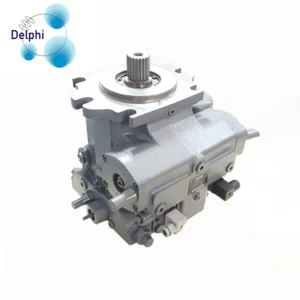Dealing with the primary factors of hydraulic pump failing entails aggressive upkeep practices and addressing common causes of failure.
Below are some methods to battle these variables:
Contamination Control:
Use high-grade hydraulic liquid that satisfies the maker’s requirements and alter it on a regular basis.
Set up and keep effective filtration systems to eliminate pollutants from the hydraulic liquid.
Maintain hydraulic reservoirs, hose pipes, and installations clean to prevent debris from getting in the system.
Train drivers and upkeep employees on proper handling and storage space of hydraulic liquid to lessen contamination.
Getting too hot:
Make sure proper sizing and setup of cooling systems such as warm exchangers or followers to dissipate heat from the hydraulic system.
Display operating temperature levels routinely and resolve any concerns immediately, such as changing system stress or flow prices.
Use temperature-resistant hydraulic liquid and consider synthetic fluids for high-temperature applications.
Fluid Deterioration:
Consistently monitor fluid condition utilizing oil analysis and carry out scheduled fluid sampling to discover deterioration or contamination early.
Comply with advised fluid change intervals and make use of suitable fluids to stop chemical failure and oxidation.
Store hydraulic liquid in tidy, covered containers and maintain it away from sources of contamination and moisture.
Cavitation:
Make sure hydraulic system design consists of correct sizing of parts, adequate fluid supply, and evasion of suction line restrictions.
Monitor system stress and circulation prices to detect cavitation conditions and readjust system criteria as necessary.
Check and maintain hydraulic pump parts frequently to spot wear or damage that may contribute to cavitation.
Mechanical Wear:
Carry out normal evaluations and preventative upkeep on hydraulic pumps, including checking for leaks, worn seals, and harmed parts.
Change worn or damaged parts quickly to avoid further damage and make sure optimum pump efficiency.
Usage genuine substitute parts from trustworthy producers to preserve compatibility and reliability.
Improper Installation or Operation:
Make certain hydraulic pumps are installed properly according to supplier guidelines, consisting of appropriate alignment, mounting, and link of hose pipes and installations.
Train drivers on appropriate usage and maintenance procedures, consisting of staying clear of excessive tons, over-speed conditions, and abrupt begins and quits.
Implement routine training and assessment programs to make sure compliance with best methods for hydraulic system procedure and upkeep.
By implementing these techniques and remaining aggressive in monitoring and keeping hydraulic systems, you can effectively fight the main variables adding to hydraulic pump failing, extending the life of your equipment and reducing downtime and pricey fixings.